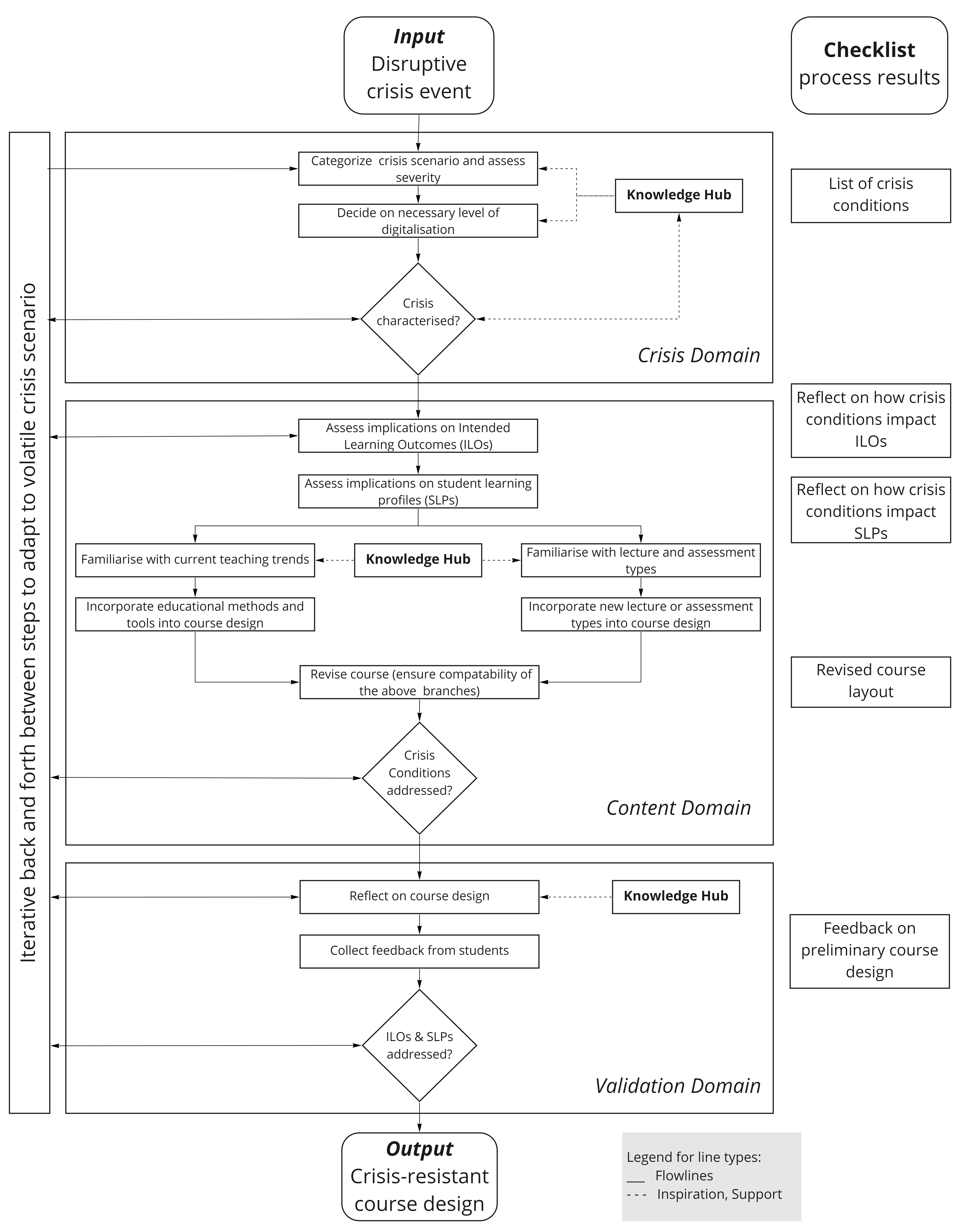The framework proposed below is intended for the systematic adaptation and digitalisation of engineering education courses in the event of a crisis. The innovation proposed would be establishing a fundamental resilience of teaching activities by creating awareness of adverse crisis impacts and devising a scenario-indifferent approach to adhere to in a crisis event. It has been published at the 24th International Conference on Engineering and Product Design Education (E&PDE 2022). Please find the conference paper here: FRAMEWORK FOR CRISIS-RESISTANT ENGINEERING PRODUCT DEVELOPMENT COURSES
The crisis domain composes of processes to identify and characterise crisis-related restrictions and to decide on the necessary level of digitalisation for the situation. To facilitate this, the list of generic crisis conditions provides guidance through the processes.
The Knowledge Hub is a planned platform that provides experience reports on how other educators adapted to crises, which should aid an applicant in classifying the event. A first decision gate ensures the quality of the outcomes from the first domain.
Within the content domain, implications from previously defined crisis conditions on intended learning outcomes and student learning profiles should be considered. From these considerations and by consulting the review on modern educational goals, the educator has to revise their course and integrate the situation-appropriate tools and methodologies into their revised course.
The Knowledge Hub can present examples of revised courses and teaching practices from other educators. The second decision gate should ensure the proper fitting of adaptations in the revised course layout with crisis conditions.
Assuming the implementation of the revised course, the applicant progresses to the validation domain. When testing the revised course layout in the crisis setting, the educator has to carefully monitor whether set learning outcomes are met and if student learning styles are addressed. This can be achieved by feedback from the students and a comparison of course layouts regarding irregularities in student behaviour and grading.
The Knowledge Hub should again serve as a resource on how other educators experience a crisis and which problems were encountered during the implementation of their courses. A final decision gate provides necessary iterations for a complete validation domain.
A crisis event, such as the COVID-19 Pandemic, sets rapidly changing boundary conditions for teaching and training activities. As such, educators need flexible tools and methods to adapt to a variety of scenarios and alleviate the fast decision-making process. Digital teaching and learning are especially suitable for providing this type of flexibility. Since digitalisation facilitates synchronous and asynchronous activities, educators can adopt a more student-centered teaching style by letting students set their own learning pace. Despite the availability of numerous educational tools and methods, however, the question of how lectures can be digitized while considering restrictive external factors has not yet been answered. This makes the quality of delivering education dependent on the digital skill set of the educator and faculty resources.
Crisis scenarios require the flexible adaption of learning concepts to the given situation. The blended learning concept comprises of both traditional classroom teaching/learning and e-learning approaches, and provides the flexibility required throughout different crisis scenarios. As such, there are many variants of this educational approach: complete classroom replacement, e-learning with classroom time supplement, e-learning at the institution campus, continuous rotation of classroom and e-learning periods, etc. This means that classroom time is reduced (or even eliminated) with a significant amount of time being dedicated to teaching via online platforms (such as learning management systems or other digital resources). Of course, to define which educational tools and approaches to use (and when) depends on the given situation and requires re-thinking and reconsideration of the teaching and learning process within the product design domain.
The picture below depicts the framework within three major domains.
